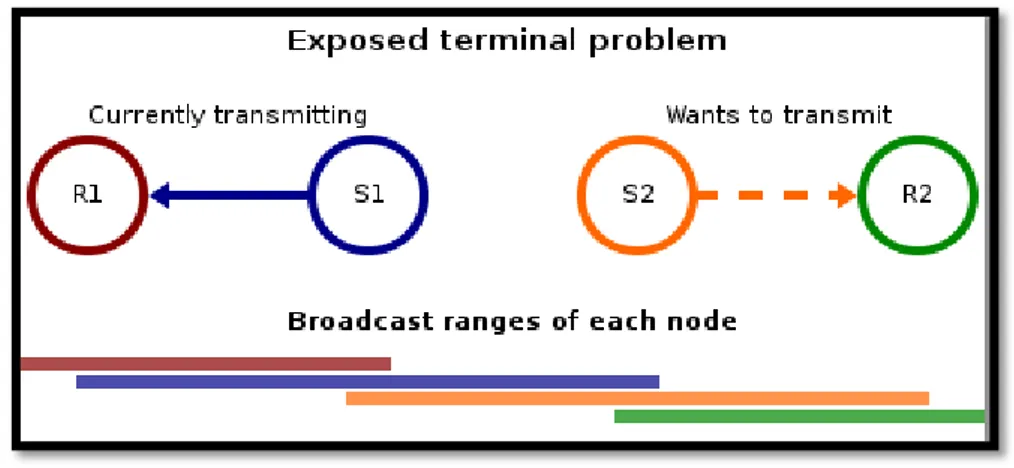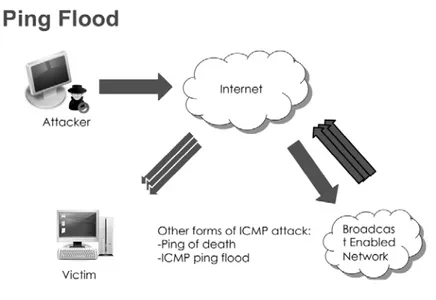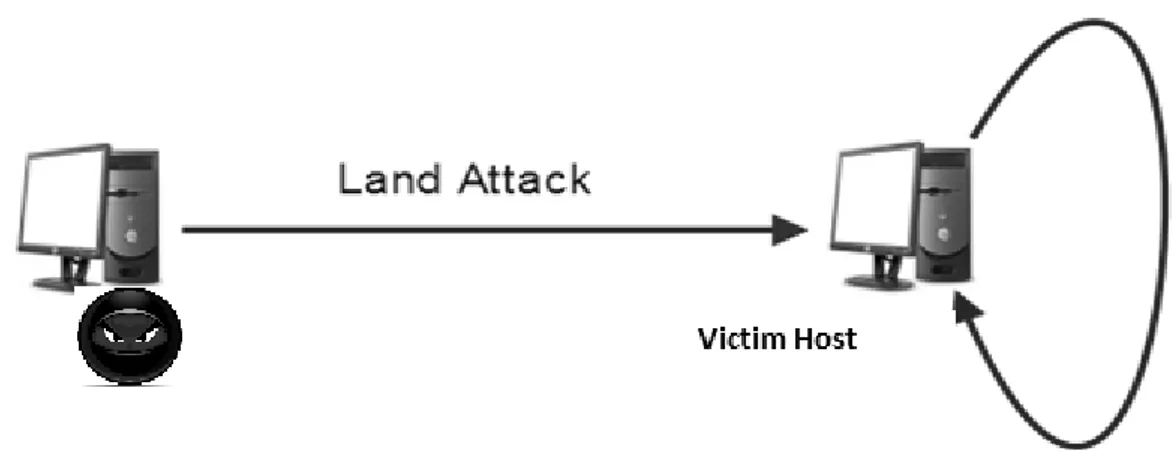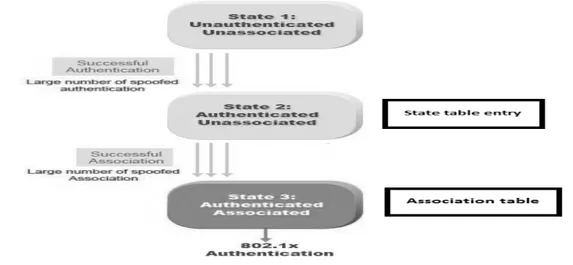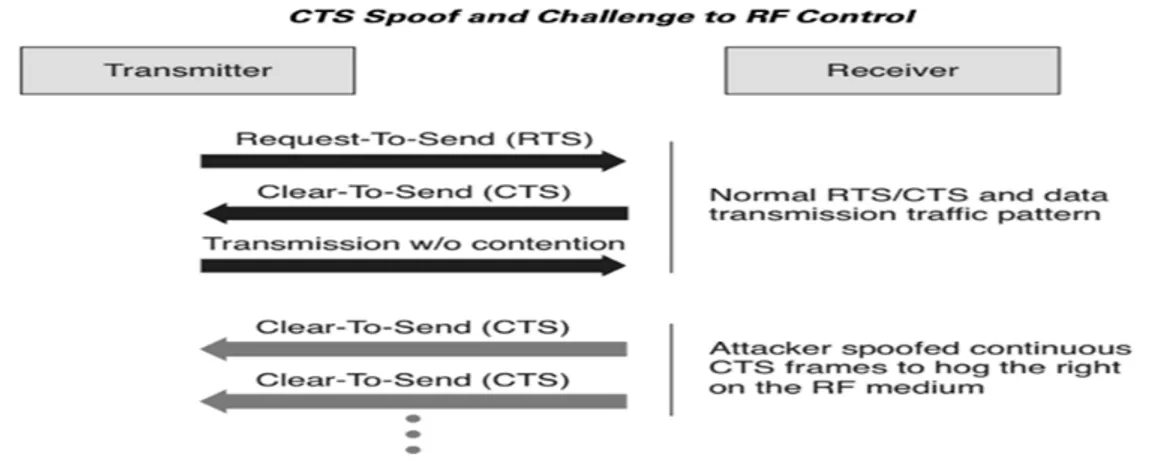Email: kiramat19901@gmail.com
Bilkent University, Turkey
Abstract:
Cooperative communications is the general idea of pooling the re-sources of distributed nodes to improve the overall performance of a wireless network. In cooperative networks the nodes cooperate to help each other. A co-operative node offering help is acting like a middle man or proxy and can convey messages from source to destination.This concept gives rise to pure wireless self-organizing networks without any need for base stations. It can be employed in various applications of networked embedded systems. Cars use it to communicate directly with each other, for in-stance, to exchange reports on accidents, traffic jams, or bad road conditions. Autonomous robots may use it to build a wireless network in areas without in-frastructure, e.g., in deserts and in space.
1. Introduction
IEEE 802.11 is a set of media access control (MAC) and physical layer (PHY) specifica-tions for implementing wireless local area network (WLAN) computer communication in the 900 MHz and 2.4, 3.6, 5, and 60 GHz frequency bands. They are created and main-tained by the Institute of Electrical and Electronics Engineers (IEEE) LAN/MAN Stand-ards Committee (IEEE 802).
802.11 is an emerging IEEE standard for broadband Wireless LANs (WLANs). The main issue addressed is sharing the wireless communication medium. The protocols used for sharing the medium are called coordination functions. They can be categorized into:
o DCF with CSMA/CA (Carrier Sense Multiple Access/Collision Avoid-ance)
o DCF with RTS/CTS (Request To Send/ Clear To Send)
• Point Coordinated Function (PCF)
The former two are modeled in the context of the ad-hoc mode, while the latter is mod-eled in the infrastructure mode in the presence of AP (Access Point). DCF operates in the ad-hoc mode as the AP behaves like an ordinary machine, i.e., it does not do anything central in DCF.
2. CHALLENGES WITH DCF
There are many challenges associated with DCF. Here for this project sake, two are going to be discussed.
1) The first attacker chose to find the goals and system for the attack. Then he discovers the target network and calculated all the limitations of network and system resources.
2) After first phase an attacker floods company’s network or system with useless and malicious information [6].
3) Since Network and system can only handle a limited amount of traffic and an attacker overloads the targeted system with the unlimited amount of traffic. 4) Denial-of-service attacks disable the computer or the network partially or
completely depending on the nature of the enterprise [7].
For example in authentication flood, the users send an authentication request to AP, AP respond with approval if there is space for approving. If the user has malicious intention then he can flood the AP by sending the flood of authentication request which causes AP to respond and hence others nodes of the network face DoS [8].
2.1.1. EXPOSED NODE PROBLEM
In wireless networks, the exposed node problem occurs when a node is prevented from sending packets to other nodes because of a neighboring transmitter [2]. Consider an ex-ample of 4 nodes labeled R1, S1, S2, and R2, where the two receivers (R1, R2) are out of range of each other, yet the two transmitters (S1, S2) in the middle are in range of each other (see figure 7).
Figure 7 Exposed Terminal Problem
Here, if a transmission between S1 and R1 is taking place, node S2 is prevented from transmitting to R2 as it concludes after carrier sense that it will interfere with the trans-mission by its neighbor S1. However note that R2 could still receive the transtrans-mission of S2 without interference because it is out of range of S1.
Figure 9 Four-way handshake with busy advertisement signals
3. Attack Types
1. Packet Internet or Inter-Network Groper (Ping) Flood Attack or (ICMP echo) 2. (synchronization)SYN Flood Attack (DoS attack)
3. DDoS Attack (Distributed SYN Flood) 4. Land Attack (Local Area Network Denial) 5. Authentication request flood
6. Association request flood 7. CTS Flood attack
8. RTS DoS Attack 9. Beacon Flood
3.1. Ping Flood Attack (ICMP echo)
In Ping flood attack, the attacker focus is network bandwidth. An attempt by an attacker on a network focus is bandwidth, fill a network with ICMP echo request packets in order to slow or stop legitimate traffic going through the network. As shown in fig 2.
Ping is a basic
net-work program, which
used for checking that system is alive to receive data or not. When a system receives the Ping message, the system must reply if it alive and active. Ping flood is also known as ICMP flood, To create DoS in the network, the attacker sends thousands of ping messages to victim node and victim node just only busy with responding that he is alive. At that time victim system are not able to process the other nodes infor-mation. Victim system is even not able to receive other data in worst case scenario. [10]
3.2. SYN Flood Attack
SYN messages are exchanges when a client needs to connect to a server in TCP. The user sends an SYN message, in response server send back SYN-ACK message [11]. In SYN flood attacker sends so many SYN requests that the system is notable for oth-er nodes to respond. Since the soth-ervoth-er is busy with the reply to malicious SYN message and legitimate users are in the waiting stage. As explained in fig 3. [9]
Figure 2 SYN Flood Attack
3.3. DDoS Attack
Distributed Denial of Services (DDoS) is such kind of DOS attack there are many step stone systems are used for generating malicious traffic and after that directed the flow of malicious traffic to the victim system and that cause a Denial of Service (DoS) at-tack. As shown in fig 4
Figure 3 DDoS Attack Flow of traffic
3.4. How DDoS Attacks Work
There are three steps to launch the DDoS attack [12]. The main goal of the attacker is launching a large traffic and makes that flow direction towards victim system. For that, he first compromised many other systems called zombies. They are
compro-mised using Trojans, infected system with malicious software and getting control of that zombie system. Using zombies having many advantages for the attacker, it's be-come impossible to block all zombies IPs addresses after detection. Each zombie gen-erated traffic and direct that flow towards the victim. Even zombies detected attacker ID can't be detected. [13]
To handle zombies there is a controller in the second step. This may be also a com-promised system or a system used by attacker temporarily. Controller, take instruc-tion from an attacker, like how many zombies would be involved and for how much time, also malicious traffic format. Even victim find the controller, attackers ID are still hidden from the victim. The zombies and controller are used as step stone in the above two phases. The third step is traffic directed towards the victim [14].
4. Types of DDoS Attacks
There are many types of DDoS attacks. Common attacks include the following:
• Traffic attacks: In traffic attacks, the DDoS traffic is legitimate traffic like
TCP, UDP, and ICMP. It's impossible for the victim to distinguish among ma-licious traffic and legitimate traffic because traffic pattern is same as like legit-imate traffic. That’s preventing legitlegit-imate user to access the system or net-work [15].
• Bandwidth attacks: In that kind of attack attacker's aim is bandwidth only.
So he fills the bandwidth with junk data. Traffic can be easily distinguished by victims but the amount of traffic is so much that it can't be handling [16].
• Application attacks: In application attack, the attacker exploited the
applica-tion layer and resource unavailable for legitimate users after malicious traffic. Application layers distributed data to system resources.
4.1. Land Attack (Local Area Network Denial)
• It’s an old kind of attack. In land attack, the attackers send malicious packets such that it has the same source and destination address. Both host and source addresses are victim addresses. It's mostly used in local area networks. The victim system is lock up after getting that packets and response to itself and loop continue until system detected or shutdown. As shown in fig 5.
Figure 4 Land Attack (Local Area Network Denial)
1.1.1 Authentication request flood
• A node after listening bacon sends authentication request to AP, to associate itself with AP.
• AP maintains a state table, where there is the list of authenticated nodes. • There are two kinds of effects of such DoS attack, First AP affected, because
commit its normal operation and serve the request, when the request is too much, AP only will do the job maintaining the state table. The second effects are legitimate users when state table is filled by malicious requests, there would be no space for accepting more legitimate requests. State table also has limitations. Shown in fig 6.
• In that kind of attack attacker first, need to spoof the MAC of others node. So it's little difficult to launch if there is the proper mechanism of protection for MAC addresses. [17]
Figure 5 Authentication request flood
1.1.2 Association request flood
• After authentication, there is association step, in association step AP associate a client and make the entry in the association table. But this association is also vulnerable to DoS. There is de-authentication packet after authentication from AP if that de-authentication packet is spoofed and an attacker crack passwords then he can also reach to the association table. As shown in fig 7.
• That table also has limits and if requests are beyond the limit of an associated table, there would defiantly a DoS attack.
• It's harder to launch, because of the authentication step. An attacker must cross the authentication step [18].
•
start sensing media after CTS maintained time duration.
• This behavior can be exploited by an attacker, if an attacker sends CTS to oth-ers after the interval to othoth-ers node, other nodes would be in quite a state after receiving.
• If the sending malicious CTS are back to back, no other node is able to send data. As shown in fig 8.
• There is also possible that CTS sender node increase the duration and nodes goes in the quiet state for the extra time.[17]
1.1.4 RTS DoS Attack
• RTS frame includes Frame Control, Duration, RA, TA, and FCS. By sending RTS frames mentioning large transmission duration, an attacker reserves the wireless medium for the overdue time and forces others wireless stations shar-ing the RF medium to delay their transmissions. As shown in fig 9.[18]
Figure 8 RTS Flood
1.1.5 3.3.8 Beacon Flood
Wireless clients can detect the presence of access points by listening for the beacon frames transmitted from APs. Beacon flood is launched by an attacker in such way, that first he generates thousands of malicious beacons around legitimate [20] AP that made difficult for the individual station to find the legitimate AP for the association. As shown in fig 10.
Figure 9 Beacon Flood
Damage & Costs
1. Other affecting: There are many costs associated with denial-of-service
at-tacks. Like an attacker target the server, when server down, it does not only ef-fect the server but also other users and sites associated with that victim server [19].
ing, making logs etc.
4. Insurance& Bandwidth cost: As in international market we pay per byte. In
DoS attack case the traffic is very high from normal traffic and that also in-creases the bandwidth cost.
How to handle DoS
• Protecting: The first step should be protected in such kind of attack, protec-tion mechanism should be installed by ISP, and there should be an agreement between ISP, an insurance policy. Most of the people do that after learning a lesson.
• Detecting: If you detect properly then you would be able to respond accurate-ly. For detection, there should be proper check and balance on log system, traffic pattern, updated blacklist and all updated detection software [28]. The attacker use different mechanism to launch the attack. So maybe detection not helps out in some kind of attacks [22].
• Reacting: Reaction step comes when there is no proper protection and detec-tion mechanism. In that step there would some technical steps which are mostly implemented, are informing ISP, start backup system and moving da-ta to the backup system, decreasing the incoming traffic, applying available data content filters on incoming traffic, redirecting traffic, shut downing after data is moved. [30][23]
1. M. Naeem, Jorge Diaz-Martinez, Shariq Aziz Butt and Nicolo Montesano, “Trends and Future Perspective Challenges in Big Data”, in Proc. Of The Sixth Euro-China Conference on Intelli-gent Data Analysis and Applications (ECC2019) Arad-Romania, March 2020.
2. Z. Haider and M. Saleem,"Analysis of Interference in Wireless", in Proc. of ArXiv, arXiv:1810.13164 [cs.NI], Oct. 2018.
3. A Khalid, SA Butt, and S Gochhait, “Agile Scrum Issues at Large-Scale Distributed Projects: Scrum Project Development At Large”, in International Journal of Software Innovation (IJSI), Vol 8, Issue 2, Pages: 85-94, IGI Global 2020.
4. S Gochhait, SA Butt, and A Ali, “Cloud Enhances Agile Software Development” Book Chap-ter in Cloud Computing Applications and Techniques for E -Commerce, Pages: 28-49, IGI Global, 2020.
5. M Alam, and MM Umair, "Detection and Prevention Against RTS Attacks in Wireless LANs", in Proc. of IEEE C-CODE, Islamabad Pakistan, Mar. 2017.
6. T. Jamal, and SA Butt, "Malicious Node Analysis in MANETS", in Proc. of International Journal of Information Technology, PP. 1-9, Springer Publisher, Apr. 2018.
7. S. A. Butt, and M. Shoaib, "IoT Smart Health Security Threats," in proc. of 19th International Conference on Computational Science and Its Applications (ICCSA), Saint Petersburg, Rus-sia, 2019, pp. 26- 31. doi: 10.1109/ICCSA.2019.000-8.
8. M. Asam and Z. Haider, "Security Issues in WBANs", in proc. of Arxiv, Volume arXiv:1911.04330 [cs.NI], November 2019.
9. M. Asam and Z. Haider, "Novel Relay Selection Protocol for Cooperative Networks", in proc. of Arxiv, Volume arXiv: 1911.07764 [cs.NI], November 2019.
10. Zeeshan Haider, Muhammad Asam, Shariq Butt and Aleena Ajaz, "Mitigation of Wireless Body Area Networks Challenges using Cooperation", International Journal of Security and Its Applications (IJSIA), ISSN: 1738-9976(Print); 2207-9629(Online), NADIA, (2020), Vol. 14, No. 1, pp. 15-30.
11. SA Butt and M. Ajmal Azad, "A multivariant secure framework for smart mobile health ap-plication", in Transactions on Emerging Telecommunications Technologies, Aug. 2019. 12. M. Asam and A. Ajaz, “Challenges in Wireless Body Area Network”, in Proc. of International
Journal of Advanced Computer Science and Applications, Volume 10, No. 11, Nov. 2019. 13. SA Butt and A. Ali, "Predictive Variables for Agile Development Merging Cloud Computing
Services", in Proc. of IEEE Access, Volume 7, 2019. DOI: 10.1109/ACCESS.2019.2929169. 14. P. Mendes, “Analysis of Hybrid Relaying in Cooperative WLAN”, In Proc. of IEEE IFIP
Wireless Days (WD), Valencia, Spain, November 2013.
15. P. Mendes, and A. Zúquete, “Relayspot: A Framework for Opportunistic Cooperative Relay-ing”, in Proc. of IARIA ACCESS, Luxembourg, June 2011.
16. SA Butt, “Cooperative Cloudlet for Pervasive Networks”, in Proc. of Asia Pacific Journal of Multidisciplinary Research, Vol. 5, No. 3, PP. 42-26, Aug 2017.
17. SA Butt, and T. Jamal, “Frequent Change Request from User to Handle Cost on Project in Ag-ile Model”, in Proc. of Asia Pacific Journal of Multidisciplinary Research 5 (2), 26-42, 2017.
21. SA Butt, “Low-Energy Adaptive Clustering Hierarchy (LEACH) Enhancement for Military Security Operations”, In Proc. Of Journal of Basic and Applied Scientific Research, ISSN 2090-4304, 2017.
22. Z. Haider, "Denial of Service Attack in Cooperative Networks", in Proc. of ArXiv, arXiv: CoRR Vol. arXiv:1810.11070 [cs.NI], Oct. 2018.
23. T. Jamal and P. Mendes, “Relay Selection Approaches for Wireless Cooperative Networks”, in Proc. of IEEE WiMob, Niagara Falls, Canada, Oct. 2010.
24. T. Jamal and P. Mendes, “Cooperative relaying in user-centric networking under interference conditions”, in Proc. of IEEE Communications Magazine, vol. 52, no. 12, pp. 18–24, Dec 2014.
25. Fawad, U., et al. "Proton, UV, and X-ray Induced Luminescence in [Tb.sup.3+] Doped Lu[Gd.sub.2][Ga.sub.2][Al.sub.3][O.sub.12] Phosphors." Crystals, vol. 10, no. 9, 2020. 26. Fawad, U.; Kim, H. J.; Gul, Ibrahim; Khan, Matiullah; Tahir, Sajjad; Jamal, Tauseef;
Mu-hammad, Wazir. 2020. "Proton, UV, and X-ray Induced Luminescence in Tb3+ Doped LuGd2Ga2Al3O12 Phosphors" Crystals 10, no. 9: 844.
